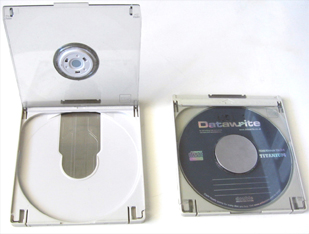Tray loading mechanism
The most common of the three, the tray loading mechanism, is made of a plastic tray driven by rubber belts and gears.
The tray moves in and out when the eject button is pushed. When open, a gentle push of the tray can also retract the tray.
Unlike the caddy, which we will look at briefly, the tray is overall less expensive. However, it has several disadvantages, one of them being that it is prone to breakage, which can happen from mis-usage.
The tray loading mechanism is made of plastic that can crack or split if pressure is applied to it when it is open. The tray mechanism doesn’t hold the disc securely, so if the disc is not placed properly, either the disc or the tray may be damaged.
Another major disadvantage is that it cannot work well when in a vertical position because gravity disallows proper loading. However, this can be overcome by opting for a version that has clips that will grab the CD.


